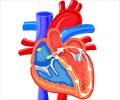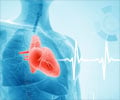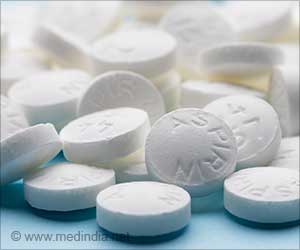Abnormal heart turbulence could potentially prove fatal in elderly, even though otherwise they might be low-risk individuals.
Abnormal heart turbulence could potentially prove fatal in elderly, even though otherwise they might be low-risk individuals, according to a study funded by the National Heart, Lung, and Blood Institute (NHLBI), part of the National Institutes of Health.
This study appears in the Feb. 15 edition of the Journal of Cardiovascular Electrophysiology.Among the nearly 1,300 study participants, heart rate turbulence, which reflects how well the heart reacts to occasional premature contractions, was an even stronger heart disease risk factor than elevated levels of C-reactive protein. CRP is a potential heart disease biomarker that has emerged in recent years.
Study participants considered at low risk of heart disease based on traditional risk factors were on average 8 to 9 times more likely to die of heart disease during the roughly 14-year follow-up period if they had abnormal heart rate turbulence values. Traditional risk factors include age, gender, high blood cholesterol, high blood pressure, obesity, diabetes, and smoking. Low-risk individuals with elevated CRP in their blood were about 2.5 times more likely to die than those with normal or low CRP.
“These findings suggest that apparently healthy people might be at increased risk of death from cardiovascular disease, and heart rate turbulence may help us identify them,” said Susan B. Shurin, M.D., acting director of the NHLBI. “It will be important to see if we can replicate this finding in other populations.”
This study followed 1,272 adults aged 65 and older as part of the NHLBI’s Cardiovascular Health Study. Participants were categorized as healthy (no sign of heart disease risk except possibly diabetes), subclinical (some signs of heart disease) or clinical (had a cardiovascular event, such as a heart attack). At the onset, participants underwent 24-hour monitoring of their hearts’ electrical activity through a small electrocardiographic, or ECG, device called a Holter monitor attached to their skin.
Abnormal heart rate turbulence and CRP levels both appeared to independently correlate with an increased likelihood of dying of heart disease in the group that was categorized as healthy, even after controlling for other risk factors. Abnormal heart rate turbulence — present in about 7 percent of the study participants — also predicted an increased likelihood of heart disease death in the subclinical and clinical groups, though these results were not as pronounced.
Advertisement
By analyzing the heart’s electrical signals, physicians can measure the magnitude of the initial heart rate jump (turbulence onset) and the speed at which heart rate returns to normal (turbulence slope), and then determine if the heart rate turbulence response is normal or abnormal.
Researchers don’t yet know if abnormal heart rate turbulence can be treated or prevented. In the meantime, said Stein, interest might grow within the medical community in measuring heart rate turbulence in clinical practice. Currently, this type of measurement is not widely available.
“This study shows a great potential value for heart rate turbulence in diagnostic settings,” said Robin Boineau, M.D., a medical officer in the NHLBI’s Division of Cardiovascular Sciences. “It appears that signs of heart rate turbulence are also generally present a year or more before clinical manifestations of heart disease, indicating that this may be an opportunity for disease prevention in addition to disease prediction.”
In addition to the NHLBI, the National Institute of Neurological Disorders and Stroke also contributed funding to this study.
Source-Medindia












